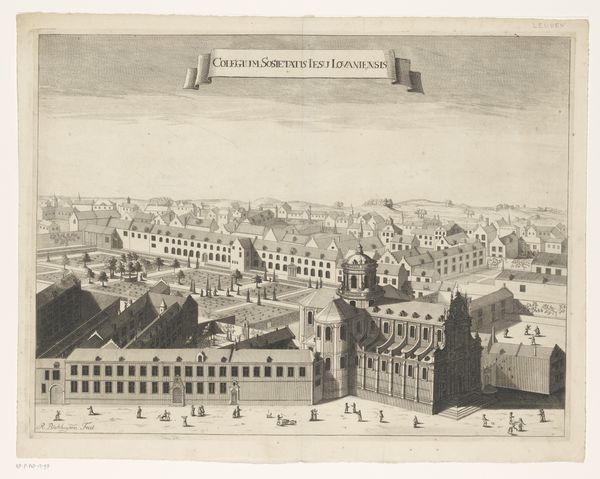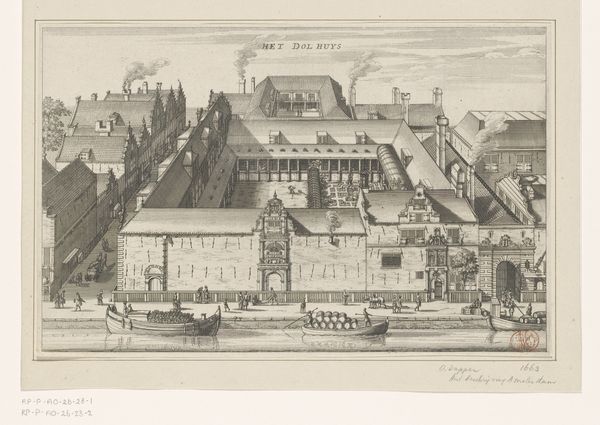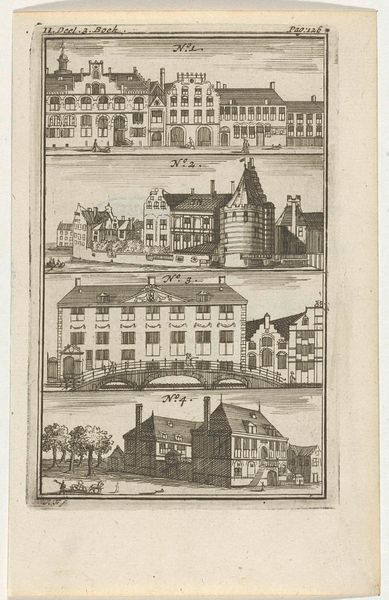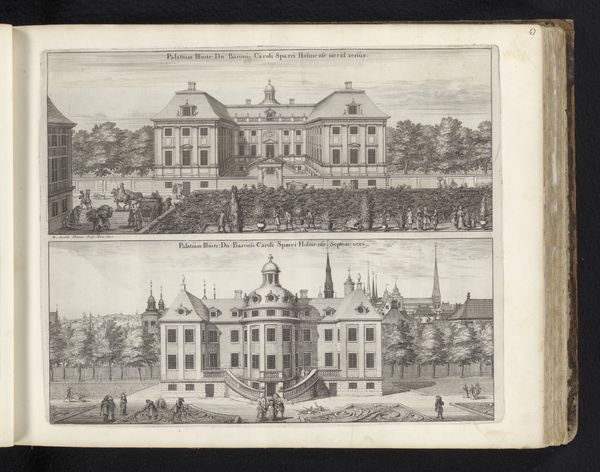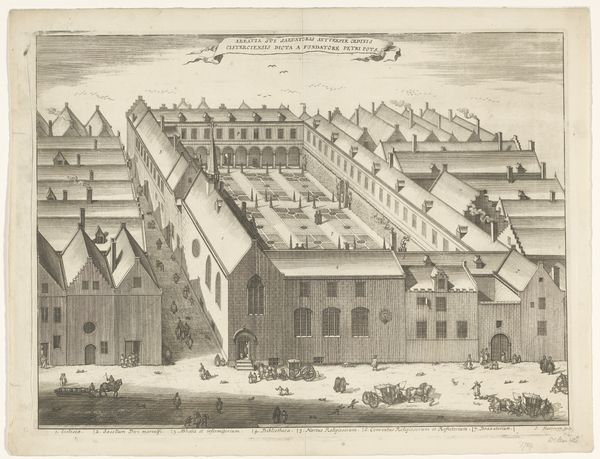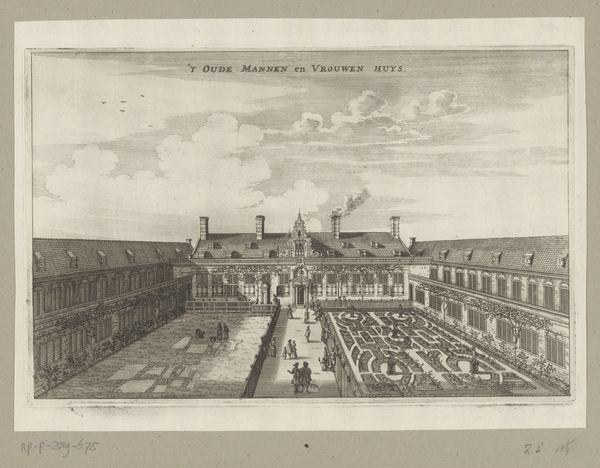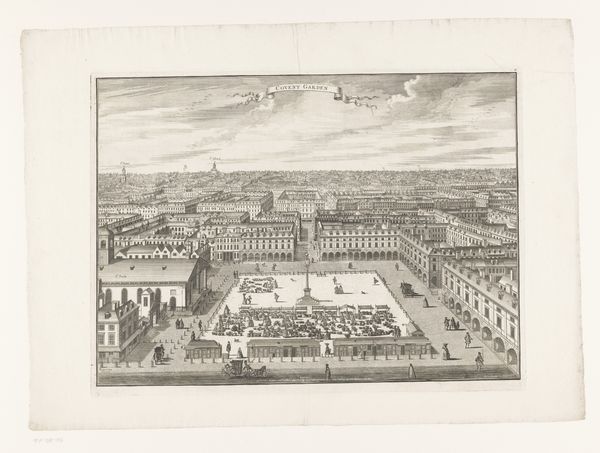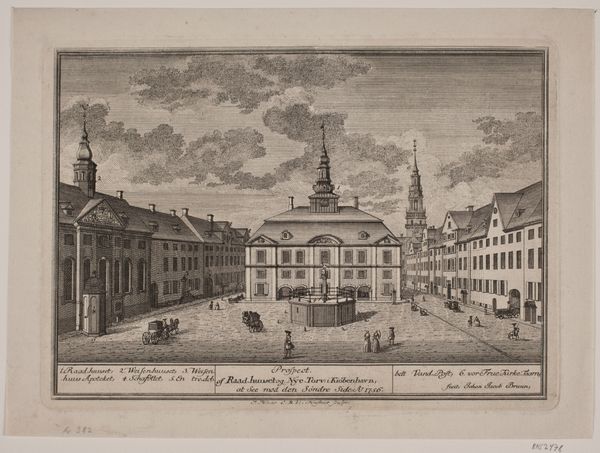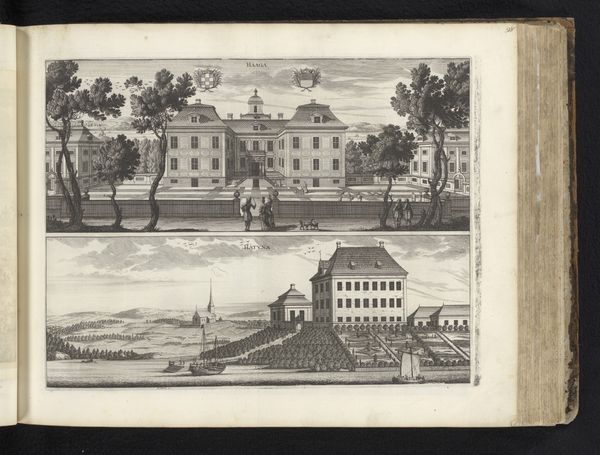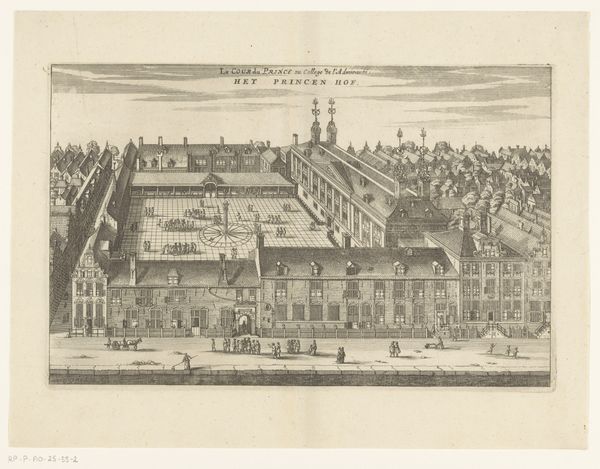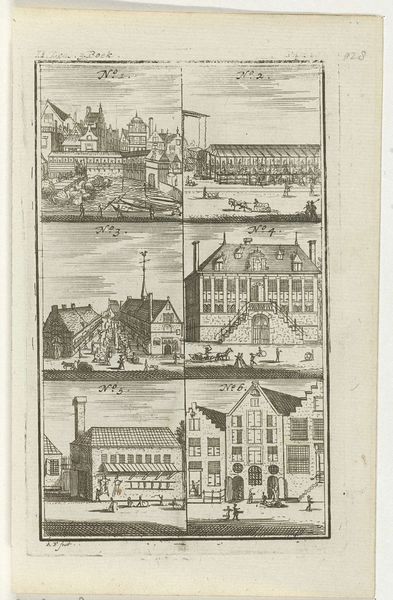
drawing, print, engraving, architecture
#
drawing
#
baroque
# print
#
perspective
#
geometric
#
line
#
cityscape
#
engraving
#
architecture
Dimensions: height 276 mm, width 346 mm
Copyright: Rijks Museum: Open Domain
Curator: Jean Marot's engraving, "View of the Palaces of Ebba Brahe and Bengt Oxenstierna," created around 1670, presents us with a fascinating glimpse into the urban landscape of Stockholm. The print showcases two prominent palaces with great detail and a careful manipulation of perspective. Editor: The immediate feeling I get is one of rigid order and controlled grandeur. The geometric precision of the architecture and garden layout projects an air of immense wealth and social stratification. The almost monochrome presentation certainly underscores this impression. Curator: Precisely! As an engraving, the process inherently demands a high degree of technical skill. Consider the labor involved in meticulously carving those fine lines into the metal plate, reflecting a substantial investment in both time and skilled craftsmanship. The print medium itself also indicates a desire for reproducibility and dissemination to a wider audience, to perpetuate status in material form. Editor: Look at how the upper palace, presumably belonging to Ebba Brahe, sits elevated, almost floating above its manicured gardens. This isn't just architecture; it’s a potent symbol of power, literally towering above the populace and even the second palace presented below. What did Brahe represent at that moment? Curator: Well, her lineage and societal standing would be central, as evidenced by this commissioned image meant to assert a material claim over symbolic landscape, using methods of advanced engraving. Editor: And that second palace. Bengt Oxenstierna's residence. While grand in its own right, the composition places it at street level, embedded within the bustling cityscape. It’s still powerful but accessible, engaging with the community in a way the upper palace does not. Flags are raised, people and coaches are present! The artist cleverly uses symbols to communicate nuances of power and connection to the people. Curator: And that emphasis on geometric structure isn't merely aesthetic. The perfectly aligned trees and rigidly symmetrical buildings signify control over nature, emblematic of an elite class that could literally reshape its environment to reflect their order of values, enabled through extraction and the exploitation of materials and labor. Editor: It’s all a highly constructed image designed to convey very specific messages, and to create an elevated experience to people accessing it even now! Curator: Indeed. By understanding the means of its production and the material conditions that enabled it, we reveal the broader power dynamics at play during the Baroque era. Editor: Analyzing those symbols gives us access to deeper narratives, of ambition, legacy and how carefully crafted images reinforce ideologies across time.
Comments
No comments
Be the first to comment and join the conversation on the ultimate creative platform.

